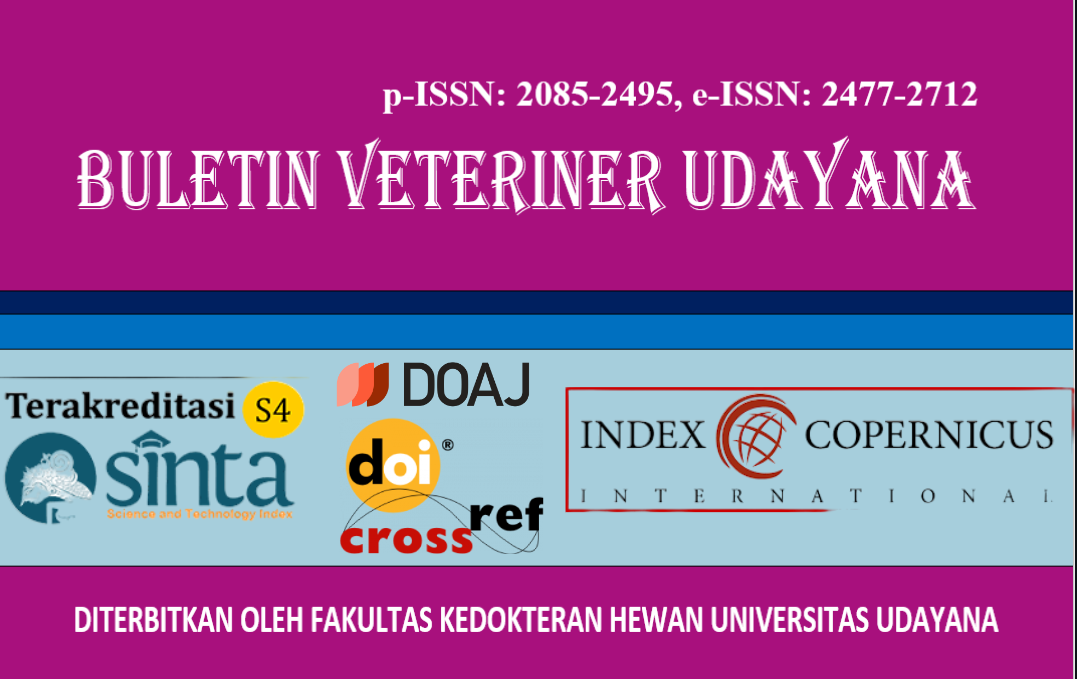CHRONIC BRONCHOPNEUMONIA IN A LOCAL CAT WITH AIR BRONCHOGRAM
DOI:
https://doi.org/10.24843/bulvet.2024.v16.i06.p06Keywords:
bronchopneumonia, cat, Bacillus sp., Air BronchogramAbstract
Bronchopneumonia is an inflammatory condition involving the bronchi, bronchioles and alveoli in the lungs. This article aims to report the management of chronic bronchopneumonia in a 21-month-old male local cat weighing 4.6 kg who had clinical signs of a cold for two months. Clinical signs included mucopurulent nasal discharge and stridor. Initial physical examination showed normal activity, but dry rales were found on lung auscultation. Supportive examinations performed included hematology, cytology of nasal swabs, radiography, and bacterial culture. Hematology revealed lymphocytosis and decreased granulocytes, while swab cytology showed neutrophils. Radiographs indicated bronchial thickening as well as radiopaque patches in the lungs, leading to the diagnosis of chronic bronchopneumonia. Bacterial culture showed infection by Bacillus sp. and Staphylococcus sp. Treatment included antibiotic doxycycline at 10 mg/kg BW for three weeks and anti-inflammatory methylprednisolone at 0.43 mg/kg BW for seven days. Evaluation was carried out for three weeks, showing significant improvement in clinical conditions, including the disappearance of mucopurulent discharge and stridor, as well as normalization of auscultation and radiographic results. At the end of therapy, hematological examination results also showed lymphocyte and granulocyte values within normal limits. The advice for owners is to pay attention to early signs of respiratory distress such as prolonged runny nose, stridor, and mucopurulent discharge. Prompt treatment of the disease can prevent the animal's condition from getting worse, speed up recovery and improve the pet's quality of life.




